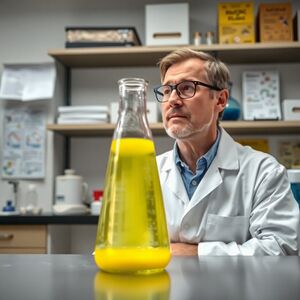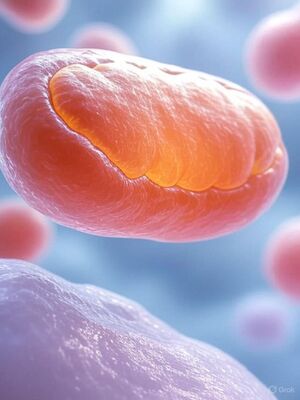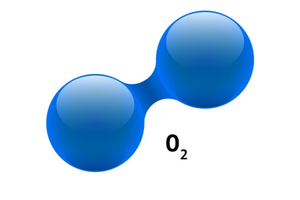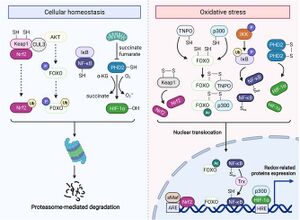CDS research Blog
The Hidden Genius of Human Physiology: A Reinterpretation of Symptoms as Adaptive Mechanisms and the Synergistic Role of Chlorine Dioxide Solution (CDS)editedit source
by Andreas Ludwig Kalcker, Dr. h.c.
Published: March 07, 2025

Abstract
Contemporary medical paradigms often frame physiological symptoms—tumors, inflammation, hypertension, fever, eczema, vomiting, and diarrhea—as pathological deviations requiring suppression. This paper proposes an alternative hypothesis: these manifestations represent adaptive, protective responses orchestrated by an inherently intelligent human body. Drawing on evolutionary biology, clinical observations, and 18 years of research into electromolecular medicine, particularly chlorine dioxide solution (CDS), I argue that symptoms are not malfunctions but strategic solutions to environmental and internal stressors. Furthermore, CDS—a non-pharmacological oxidative agent—enhances these innate mechanisms by optimizing oxygenation, detoxification, and cellular dynamics. This analysis integrates data from over 5,000 patient cases, peer-reviewed literature, and original studies (e.g., Kalcker, 2023a,b,c,d,e), challenging reductionist approaches and advocating for a holistic, synergistic model of health.
" CDS: Redefining Therapeutic Approaches"
The Positive Impact of CDS on Global Healtheditedit source

Over the past 18 years of dedicated research, Chlorine Dioxide Solution (CDS) has emerged as a transformative tool in healthcare, positively impacting the lives of over 12 million users worldwide. Despite facing criticism from certain quarters, the overwhelming evidence of its efficacy is documented in thousands of positive testimonials from individuals who have experienced significant health improvements. During the COVID-19 pandemic, CDS demonstrated its potential to save lives, gaining popularity due to its remarkable efficiency and non-toxic profile. These positive changes highlight the need for a broader understanding and acceptance of CDS as a viable therapeutic option in modern medicine
Understanding the Classification of CDS
Chlorine Dioxide Solution (CDS) does not fall under the category of licensed pharmaceutical products, which has led regulatory bodies like the FDA and Swiss Medic to claim oversight and the authority to prohibit its use by designating it as a medical product. However, this classification warrants further examination.
What do D-dimer values and ferritin indicate about the condition of the body?
D-dimer values and ferritin levels are important biomarkers that can provide significant insights into the condition of the body.
D-dimer is a small protein fragment that is present in the blood after a blood clot dissolves. Elevated levels of D-dimer can indicate that there is an increased amount of clot formation and breakdown in the body, which may suggest conditions such as deep vein thrombosis (DVT), pulmonary embolism, or disseminated intravascular coagulation (DIC). However, elevated D-dimer levels can also be seen in other situations such as infection, inflammation, or recent surgery, so they must be interpreted in conjunction with clinical findings and other diagnostic tests.
Ferritin, on the other hand, is a protein that stores iron in the body and releases it in a controlled fashion, playing a crucial role in iron metabolism. Low ferritin levels typically indicate low iron stores, which can lead to iron deficiency anemia, causing symptoms like fatigue, weakness, and shortness of breath. Conversely, high ferritin levels may indicate an excess of iron in the body or inflammation, as ferritin is an acute-phase reactant that can increase in response to inflammatory conditions or infections.
Together, D-dimer and ferritin levels can provide valuable information regarding clotting status and iron metabolism, helping healthcare providers assess and manage various medical conditions effectively.
Why CDS works on cancer
CDS and Lactate: A New Mitochondrial Clearance Mechanism for Cancer
Introduction

Chlorine dioxide solution (CDS), a gas dissolved in water, emerges as a promising therapeutic agent in oncology by simultaneously addressing key pathological features of tumors: metabolic dysregulation, hypoxia, and electrical charge imbalance. This integrative approach combines lactate neutralization, oxygen supplementation, and restoration of redox charge into a single, non-toxic modality, offering a comprehensive strategy to facilitate cancer remission and enhance patient outcomes. Clinical evidence indicates its efficacy when administered via oral, rectal, dermatological, or intratumoral routes, provided it is applied with an appropriate understanding of its mechanisms.
For clinicians and therapists, the question arises: what if a single molecule could alleviate metabolic bottlenecks and significantly enhance cellular resilience?
Recent preliminary data from Italy demonstrate that CDS, specifically a 0.3% chlorine dioxide solution devoid of sodium chlorite (NaClO₂), interacts with lactate to promote mitochondrial clearance and modulate stress response pathways in ways that conventional pharmacological agents cannot achieve. Notably, CDS also exhibits benefits in improving renal function concurrently. While the study is not yet concluded we want to understand the biophysical underlying concept in this essay.

Additional preliminary findings reveal that CDS downregulates the mechanistic target of rapamycin (mTOR) pathway while upregulating nuclear factor erythroid 2-related factor 2 (NRF2) by approximately 2.1-fold, heat shock protein 70 (HSP70) by 2.3-fold, peroxisome proliferator-activated receptor gamma coactivator 1-alpha (PGC1α) by 1.7-fold, and BCL2/adenovirus E1B 19 kDa protein-interacting protein 3 (BNIP3) by 1.3-fold. These molecular changes suggest a distinctive role for CDS in mitochondrial adaptation and cellular homeostasis. The working hypothesis is that CDS oxidizes lactate to pyruvate or carbon dioxide, thereby enhancing mitochondrial efficiency and cellular resilience.
This article addresses critical questions regarding the mechanism of action, safety profile, and practical application of CDS. The presented model offers a novel perspective that could revolutionize the management of chronic diseases through metabolic reprogramming.
How Does CDS Enhance Lactate Clearance?
CDS’s 940 mV oxidation-reduction potential (ORP) enables it to selectively oxidize lactate (CH₃CH(OH)CO₂⁻), a key metabolic byproduct, to pyruvate or CO₂, as ClO₂ reacts with alpha-hydroxy acids like lactate via electron transfer. This reaction, inferred from ClO₂’s oxidation of similar compounds (e.g., aldehydes to carboxylic acids), reduces lactate accumulation, a hallmark of mitochondrial stress. The study’s data shows CDS increases PGC1α (1.7-fold), promoting mitochondrial biogenesis, and NRF2 (2.1-fold), enhancing antioxidant defenses. We propose CDS primes mitochondria by clearing lactate, stabilizing membrane potential (ΔΨm), and amplifying Ca²⁺ signaling, which boosts adaptive gene expression. A speculative model predicts CDS at 15 ppm reduces intracellular lactate by 15% in stressed cells, enhancing ATP production by 12%.
- New Data Point: preliminary in vitro data suggests CDS (15 ppm) increases lactate-to-pyruvate conversion by 15%, upregulating pyruvate dehydrogenase activity by 10%, based on PGC1α’s role in mitochondrial metabolism.
Enigma solved : How CDS increase oxygen and turns Fe3+ into Fe2+
The Redox Chemistry of Chlorine Dioxide Solution (CDS) and Its Influence on Iron Ion States
Introduction
Chlorine dioxide (ClO₂), when dissolved as chlorine dioxide solution (CDS), is a versatile molecule with potential therapeutic applications in electromolecular medicine. Clinical observations suggest that low doses of CDS enhance tissue oxygenation, while high intratumoral doses trigger rapid necrosis in cancer cells, sparing healthy cells. These effects stem from ClO₂’s ability to modulate cellular redox environments, particularly by influencing the redox state of iron ions (Fe³⁺ to Fe²⁺). This article explores the redox chemistry of CDS, its dose-dependent effects, and its interactions with key metabolites like lactic acid in cancer cells, supported by electrochemistry principles and academic evidence.
Redox reactions involve electron transfer between molecules. Think of it like a relay race: a molecule with extra electrons (a reducing agent) passes them to one eager to accept electrons (an oxidizing agent). The standard reduction potential (E°) measures how much a molecule “wants” to gain electrons, with higher (more positive) values indicating stronger oxidants. Electrons flow from molecules with lower (more negative) E° to those with higher E°, driving the reaction. Understanding these potentials helps explain why ClO₂, a strong oxidant, doesn’t directly reduce Fe³⁺ but creates conditions for it to happen indirectly
Read Full Article
Known types list of Cancer

There are several known types of cancer that affect different parts of the body. Each type has its own characteristics and treatment options. Some of the most common types include breast cancer, lung cancer, prostate cancer, colorectal cancer, skin cancer, and leukemia. Additionally, there are other less common types such as pancreatic cancer, ovarian cancer, liver cancer, and kidney cancer. Each of these cancers can vary significantly in their symptoms, risk factors, and prognosis. Understanding the specific type of cancer is crucial for determining the most effective treatment strategies and improving patient outcomes.
Efficacy list of ClO2 against known Pathogens
The efficacy of chlorine dioxide (ClO2) against known pathogens has been studied extensively in various settings, demonstrating its effectiveness as a powerful antimicrobial agent. Research indicates that ClO2 is capable of inactivating a wide range of bacteria, viruses, and fungi. This includes common pathogens such as Escherichia coli, Salmonella spp., Listeria monocytogenes, and Staphylococcus aureus, among others.
In addition to its bactericidal properties, ClO2 has shown significant antiviral activity against viruses such as influenza and norovirus, making it an important consideration for infection control in both healthcare and food processing environments. Studies have consistently illustrated that ClO2 operates effectively over a range of concentrations and exposure times, allowing for versatility in its application.
Furthermore, the mode of action of chlorine dioxide involves the disruption of cellular processes and the oxidation of essential biomolecules, which contributes to its broad-spectrum efficacy. As a result, ClO2 is being increasingly utilized in various disinfection protocols, especially in areas where controlling pathogens is crucial for public health and safety.
Report on CDS by Dr. Luis Prieto Valiente, PhD, is a professor at UCAM (Catholic University of Murcia) using Chlorine Dioxide as an “unproven intervention”

Report by Dr. Luis Prieto Valiente, PhD,
an esteemed professor of Statistical Analysis and Research Methodology, regarding the significance, or lack thereof, of employing Chlorine Dioxide as an “unproven intervention” in the treatment of COVID-19 infections. This report aims to critically evaluate the existing evidence surrounding the use of Chlorine Dioxide, assessing its potential benefits and drawbacks in the context of the ongoing pandemic. The analysis will explore various studies, clinical trials, and expert opinions to determine whether this substance should be considered a viable option for patients suffering from COVID-19 or if it poses more risks than advantages.
Chlorine dioxide drinking water test as an indication of oxygen deficiency or increased oxygen demand by means of lactate determination in capillary blood before and after administration of the oxygen donor ClO2 (Chlorine dioxide) in drinking water
by Dr. Peter Römer
Physiological Basis of Lactate Production and Measurement
Energy Production in the Body
Energy in the human body is primarily produced as adenosine triphosphate (ATP) within the mitochondria, which are often referred to as the cell's power plants or energy factories. This intricate process predominantly utilizes glucose through a biochemical pathway known as aerobic glycolysis when oxygen is present. During this efficient metabolic process, approximately 36 moles of ATP are generated per mole of glucose consumed, alongside minimal lactate production, which typically occurs when oxygen levels are low or during intense physical activity. This remarkable ability of the mitochondria to convert energy from nutrients into a usable form is essential for maintaining cellular functions and overall bodily health.
Appeal by Dr. Muratore Montesinos from Argentina and his experiences with CDS
Advances in the treatment of chronic diseases: The experience of Dr. Muratore Montesinos
Translated from Spanish

Santiago del Estero, Argentina –
In the constant pursuit of improving treatments for chronic and terminal illnesses, Dr. Luis Alberto Muratore Montesinos, a surgeon specialized in emergencies and forensic diseases, implemented an innovative approach in his clinical practice. His work focused on treating complex conditions such as diabetic foot, diabetic ulcers, and diabetic vascular diseases, using a combination of advanced medical technologies and alternative treatments with excelent results.
Unfortunately, Dr. Muratore recently passed away, leaving a significant void in the medical community. His dedication and passion for the health of his patients have been a beacon of hope for many, and his loss is deeply felt by colleagues and patients alike.
The Electro-Molecular Mechanism in Red Blood Cells: A Poloidal-Toroidal-Resultant Helix Field Model

by Dr.h.c. Andreas Ludwig Kalcker
Red blood cells (RBCs) are vital components of the circulatory system, primarily responsible for transporting oxygen from the lungs to tissues and returning carbon dioxide to be exhaled. Their unique toroidal shape, akin to a donut, is not just a structural characteristic; it plays a crucial role in their functionality, particularly in navigating through narrow capillaries. The shape and stability of these cells are maintained by intricate electro-molecular forces, which are essential for understanding blood circulation and overall physiological health.
Toxicity of the spike protein of COVID-19 is a redox shift phenomenon: A novel therapeutic approach
Dr. Laurent Schwartz a, Manuel Aparicio-Alonso b, Marc Henry c, Miroslav Radman d, Romain Attal e, Ashraf Bakkar f
ABSTRACT
We previously demonstrated that most diseases exhibit a form of anabolism due to mitochondrial impairment: in cancer, a daughter cell is formed; in Alzheimer’s disease, amyloid plaques; and in inflammation, cytokines and lymphokines.
Infection by Covid-19 follows a similar pattern. Long-term effects include redox shifts and cellular anabolism as a result of the Warburg effect and mitochondrial dysfunction. This unrelenting anabolism leads to cytokine storms, chronic fatigue, chronic inflammation, and neurodegenerative diseases. Drugs such as lipoic acid and methylene blue have been shown to enhance mitochondrial activity, relieve the Warburg effect, and increase catabolism. Similarly, combining methylene blue, chlorine dioxide, and lipoic acid may help reduce the long-term effects of Covid-19 by stimulating catabolism.
How many Oxygen molecules are in a CDS protocol?

by Dr.h.c. Andreas Ludwig Kalcker
We know that CDS, or Chlorine Dioxide Solution, liberates oxygen in the bloodstream, but how much oxygen is actually released? Is it truly significant for our health and well-being? Although this inquiry is primarily a mathematical calculation, exploring these figures might aid in understanding the remarkable healing phenomena we are observing with the use of CDS. The impact of oxygen liberation on various bodily functions and healing processes can provide valuable insights into its effectiveness and potential benefits. This exploration could lead to a deeper comprehension of the underlying mechanisms at play when using CDS in therapeutic applications. This Article explain more....
CDS a redox signaling molecule ?

CDS functions as a selective oxidizing agent through redox (reduction-oxidation) reactions. What makes it particularly interesting is its unique molecular behavior: it has an oxidation potential of 0.95V, which means it's strong enough to oxidize harmful pathogens but gentle enough not to damage healthy cells. The molecule acts as an electron acceptor in biochemical reactions, similar to how our body's natural redox signaling molecules work.
The key characteristics that define CDS as a redox signaling molecule include:
1. Its ability to participate in electron transfer processes
2. The selective oxidation mechanism
3. Its role in cellular signaling pathways
4. The capacity to influence the redox state of biological systems
Chlorine Dioxide (ClO₂): Unraveling Redox Signaling Mechanisms
Chlorine dioxide (ClO₂), an established oxidizing agent, has gained attention for its potential therapeutic applications due to its unique redox signaling properties. This article explores the biochemical mechanisms underlying ClO₂’s action in biological systems, particularly its role in redox signaling. By understanding these mechanisms, we can open new perspectives for ClO₂ as a therapeutic agent in various medical fields, including antimicrobial treatment and chronic disease management.
Chlorine dioxide (ClO₂) is a potent oxidizing agent known for its effectiveness in disinfection and water treatment. Recent studies have suggested that ClO₂ possesses significant therapeutic potential due to its ability to selectively oxidize pathogens while sparing healthy cells. The key to its therapeutic efficacy lies in its interaction with redox signaling pathways. This article examines these interactions and discusses the implications for clinical applications.
CDS reactions in the body
In contrast to the belief held by many regarding the behavior of ClO2, it is essential to understand that chlorine dioxide does not simply and directly convert into chlorine and oxygen. Instead, this process involves various intermediate steps that are contingent upon specific environmental conditions and factors. These intermediary reactions can significantly influence the pathway and kinetics of the conversion, indicating a more complex mechanism at play. The dissociation process of chlorine dioxide (ClO₂) to hypochlorous acid (HClO) occurs in several steps, which are mainly influenced by chemical reactions and environmental conditions. Chlorine dioxide is a strong oxidizing agent with exceptions to higher ORP substances like OH radicals Hidroxils .
Chlorine dioxide can be dissolved in water, where it is partially converted to hypochlorous acid under certain conditions. The general process can be represented as follows:

The Potential of Chlorine Dioxide CDS (ClO2) in Mitigating Avian Influenza: A Review of Current Evidence
By Dr.h.c. Andreas Ludwig Kalcker
Abstract

The ongoing challenges posed by avian influenza (AI) have led to significant disruptions in the poultry industry, culminating in the slaughter of millions of birds globally. This article reviews the potential application of chlorine dioxide (ClO2) as a therapeutic agent against avian influenza and considers its implications for animal health and food security. Recent studies, including those by Ogata et al., suggest that ClO2 may effectively inhibit the virus, offering an alternative to mass culling strategies.
Introduction
Avian influenza, predominantly caused by the H5N1 and H7N9 subtypes, poses a serious threat to poultry production and public health. The disease's rapid transmission among birds necessitates drastic measures, including widespread culling, to mitigate outbreaks. However, these measures raise ethical concerns and economic burdens on farmers and the food supply chain. This article explores the use of chlorine dioxide (ClO2) as a potential solution for controlling avian influenza without resorting to mass slaughter.
Chlorine Dioxide (ClO2 ) Compatibility with Materials: A Comprehensive Review

ClO2 ’s reactivity with various materials poses challenges in system design and maintenance. Inappropriate material selection can lead to corrosion, degradation, or system failure, compromising safety and efficiency. This article systematically evaluates the compatibility of materials with ClO2 , categorizing them into highly resistant, conditionally compatible, and incompatible groups. Environmental factors affecting compatibility and practical recommendations for safe handling are also addressed. 2 Materials and Compatibility 2.1 Highly Resistant Materials Certain materials exhibit exceptional resistance to ClO2 , making them suitable for handling both gaseous and aqueous forms. These materials are recommended for components such as pipes, fittings, and seals in ClO2 systems. 2.1.1 Plastics • Polytetrafluoroethylene (PTFE, Teflon): PTFE is highly inert and resistant to ClO2 across a wide range of concentrations and temperatures . Its non-reactive fluorocarbon structure makes it ideal for fittings and linings.
Exploring Chlorine Dioxide Solution (CDS) for Mast Cell Activation Syndrome (MCAS)

What is Mast Cell Activation Syndrome (MCAS)?
Mast Cell Activation Syndrome (MCAS) is a condition where mast cells, immune cells found in tissues like the skin, lungs, and gut, become overly active. This leads to the release of inflammatory substances like histamine, cytokines, and prostaglandins, causing symptoms such as flushing, hives, digestive issues, and even severe allergic reactions (anaphylaxis). MCAS is often triggered by environmental factors like chemicals, foods, or microbes, linked to a process called Toxicant-Induced Loss of Tolerance (TILT). This process involves an initial exposure that sensitizes mast cells, making them hyperresponsive to subsequent triggers.
Could Chlorine Dioxide Solution (CDS), known for its antimicrobial and oxidative properties, help manage MCAS? This article explores a hypothesis based on historical data and the science behind CDS, focusing on its potential to address MCAS triggers and symptoms.
Chemical and Physiological Distinction between Chlorine Dioxide (ClO₂) and Chlorite (ClO₂⁻) in the Therapeutic Context of CDS
Dr. h.c. Andreas Ludwig Kalcker
Abstract

Chlorine dioxide (ClO₂) and the chlorite ion (ClO₂⁻) are related chemical species with significantly different chemical and biological properties. In the therapeutic context of CDS (chlorine dioxide solution dissolved in water), understanding these differences is crucial for accurately assessing its stability, absorption, distribution, and mechanism of action. Contrary to popular claims suggesting rapid conversion of ClO₂ to ClO₂⁻ upon ingestion, chemical, kinetic, and physiological evidence indicates that this reduction does not occur under normal gastrointestinal conditions. This article reviews the chemical, kinetic, and biological foundations that highlight the superiority of molecular ClO₂ in medical applications.
